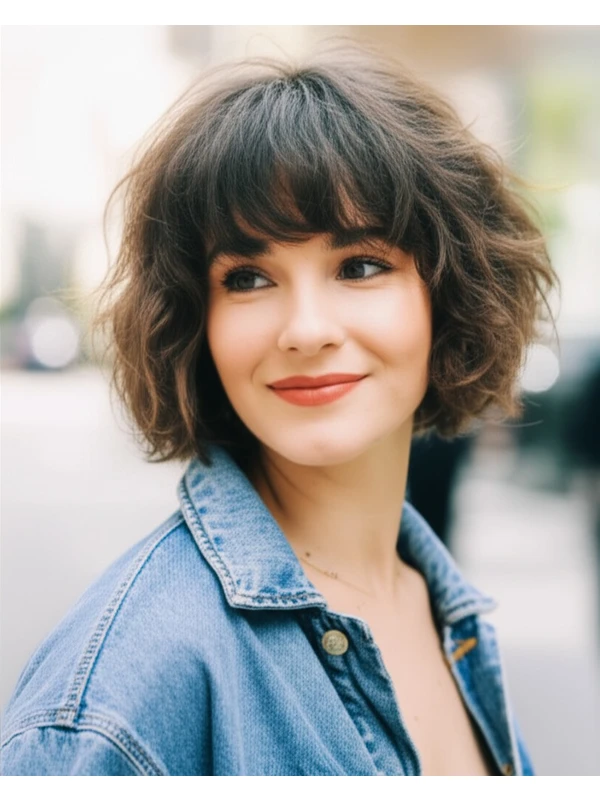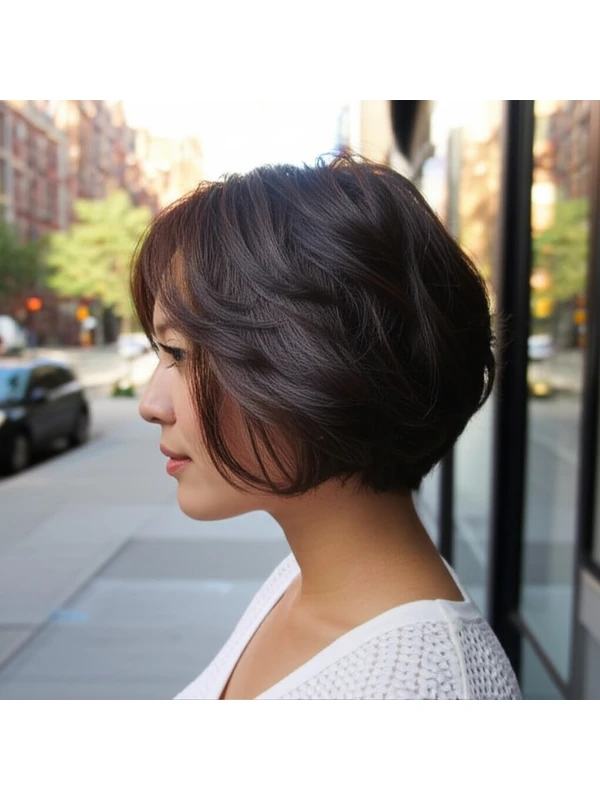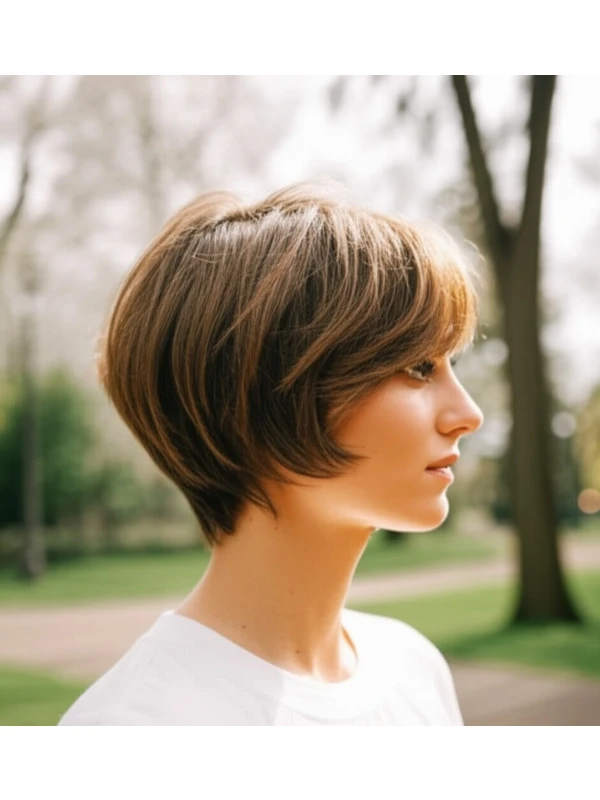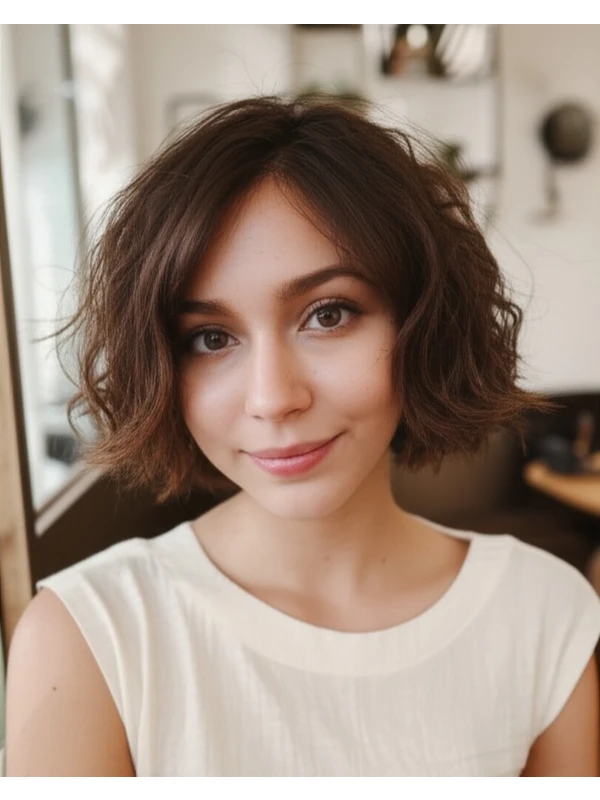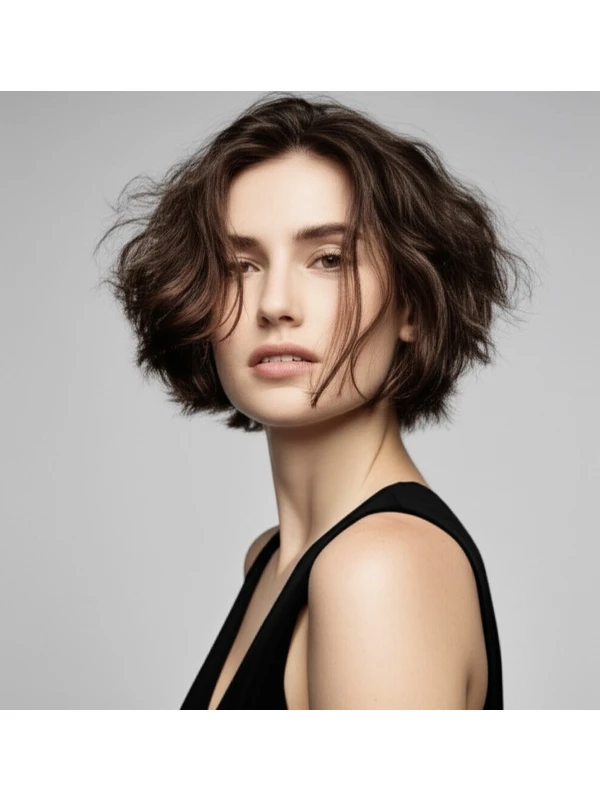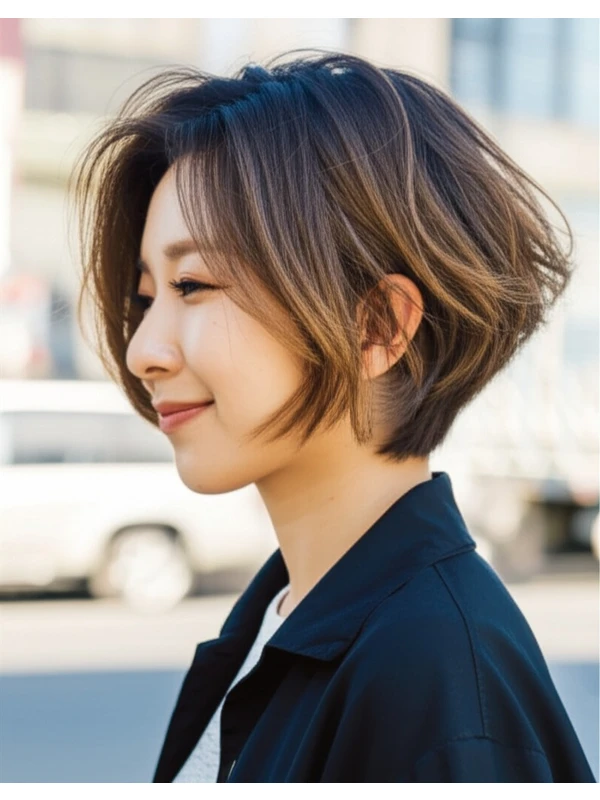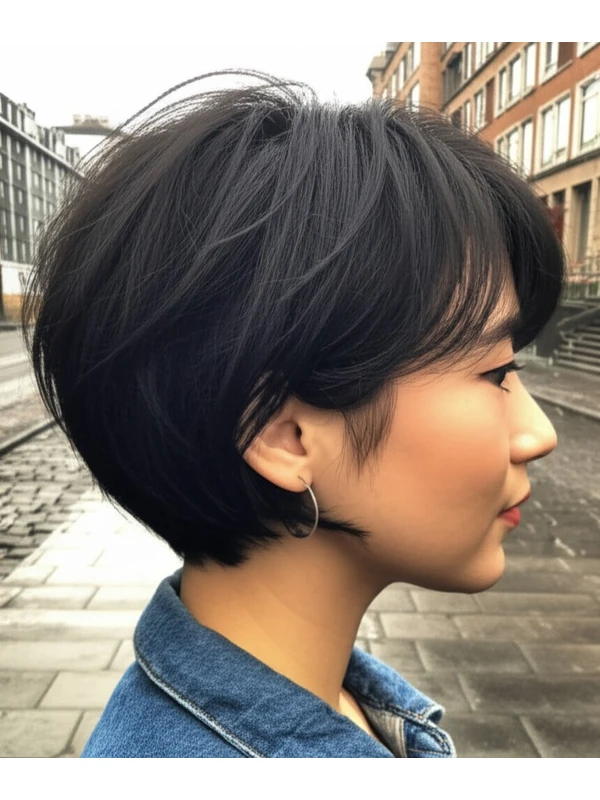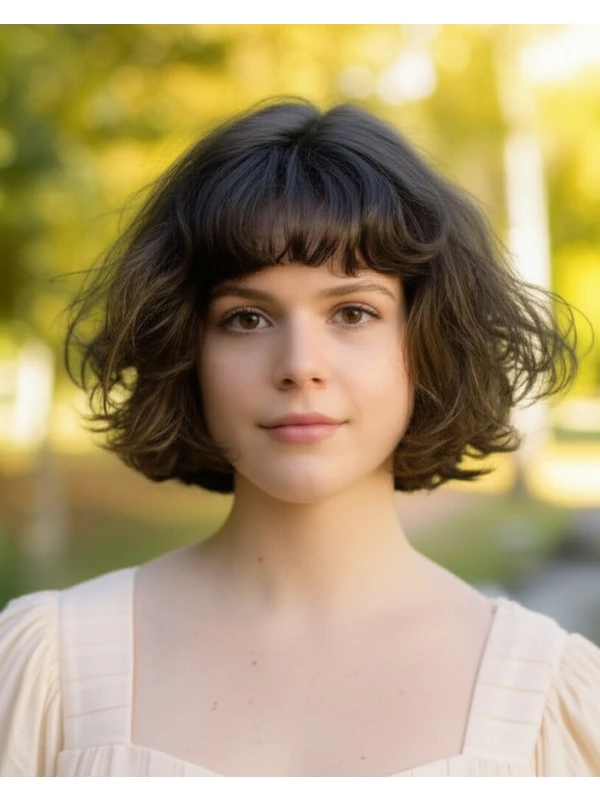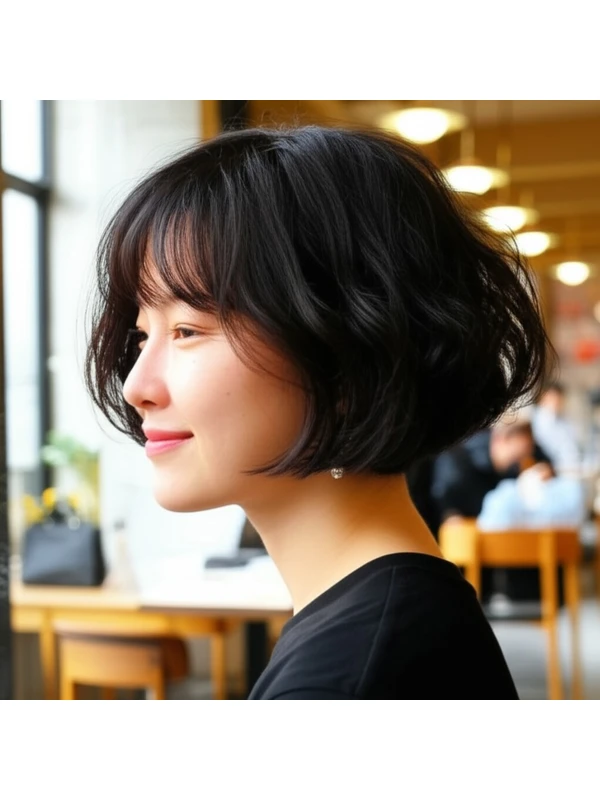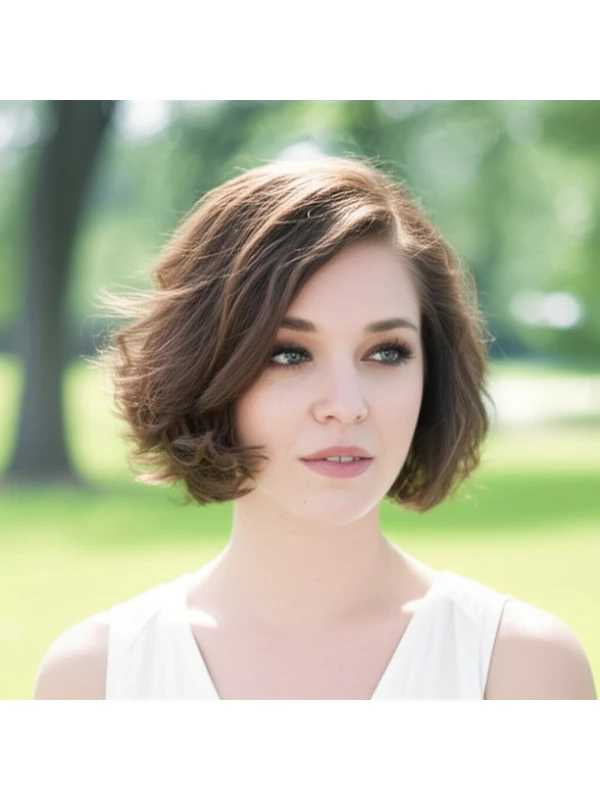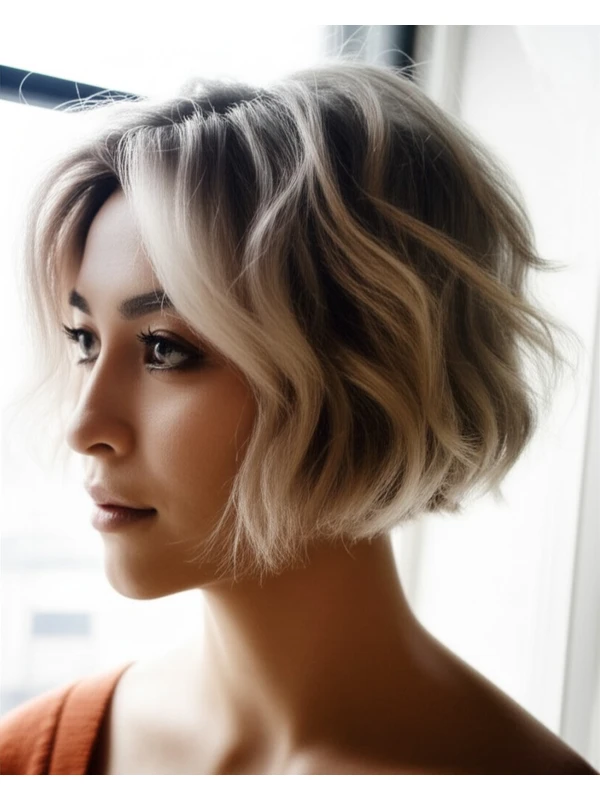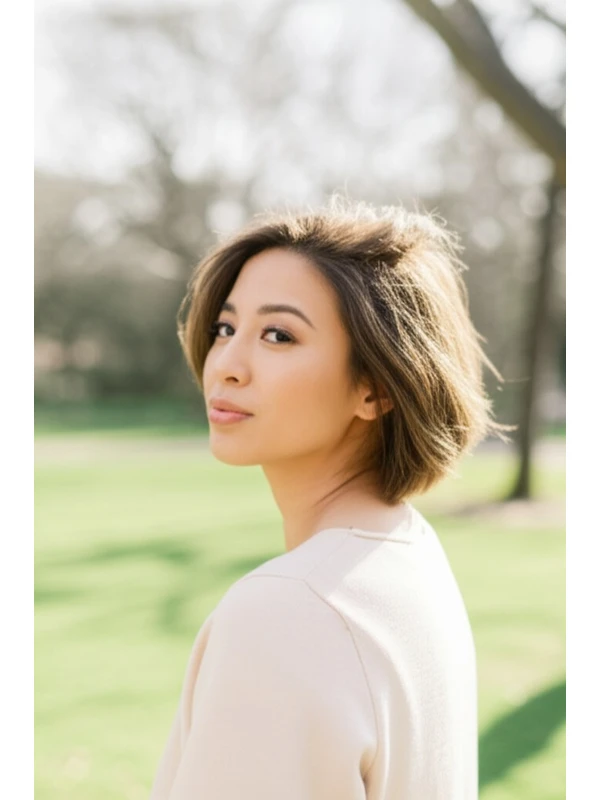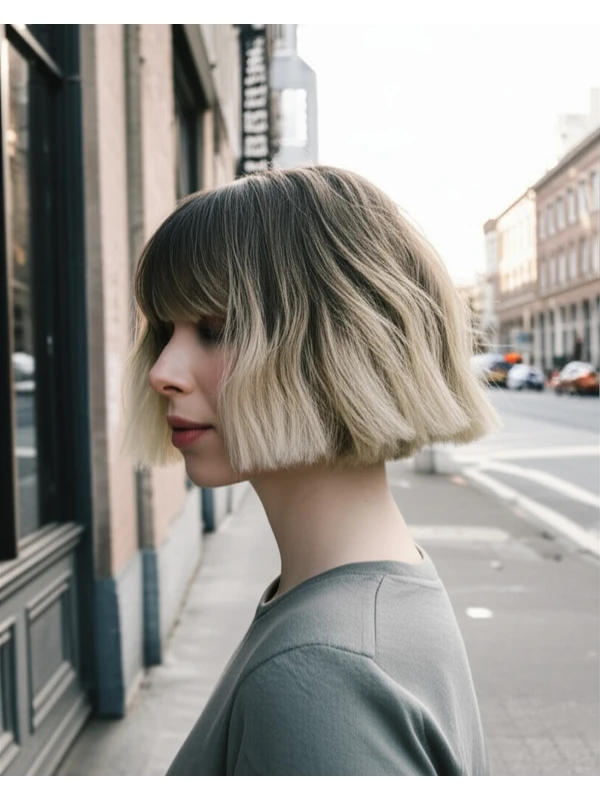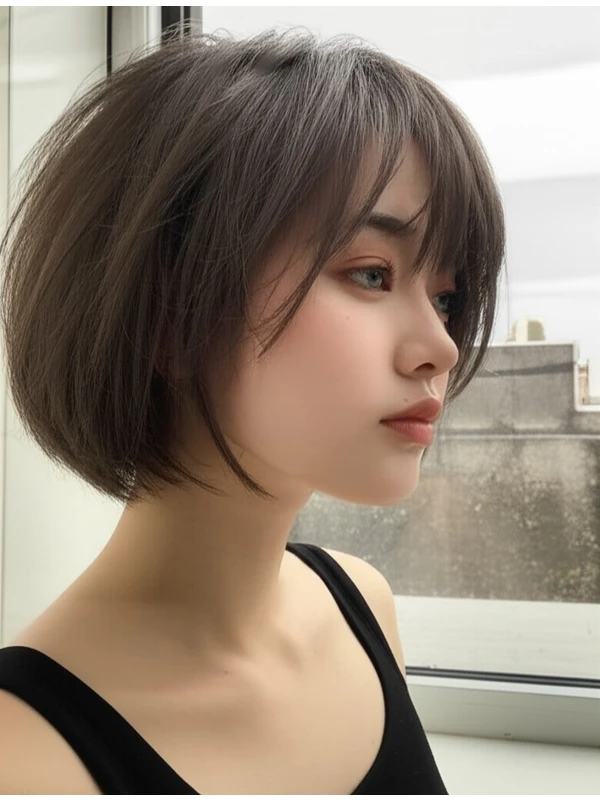#The Butterfly Bob: A Guide to Effortless Style
The butterfly bob is the haircut everyone's talking about – and for good reason! It’s a modern twist on the classic bob, offering movement, volume, and a flattering shape that works surprisingly well across different hair types. Let's dive into everything you need to know about this gorgeous style.
#1) Background & Definition: What is a Butterfly Bob?
The butterfly bob isn’t just one thing; it’s a feeling! It’s essentially a layered bob haircut with significant face-framing and soft, wispy layers that create the illusion of "butterfly wings" when styled. The key features are:
- Geometry: It's shorter in the back and gradually gets longer towards the front, creating a gentle curve around the face.
- Key Features: Soft layering is everything. It’s all about movement and volume without being overly bulky.
- Length Ranges: Typically falls between chin-length to just below the collarbone (around 6–12 inches). Shorter versions are bolder, while longer ones feel more classic.
- Alternative Names: You might also hear it called a "layered bob," “shag bob,” or even a "bixie" if it's particularly short and textured.
#2) Face Shape Fit: Finding Your Perfect Angle
The beauty of the butterfly bob is its adaptability, but understanding how it interacts with your face shape is key to maximizing its impact.
- Oval: Lucky you! This style generally flatters oval faces beautifully. The layers enhance natural symmetry and create a balanced look. A side-swept fringe adds extra softness.
- Round: Soft layering around the cheekbones and jawline will slim a round face. Avoid blunt lines at the chin, as they can accentuate width. A longer butterfly bob (closer to collarbone length) is often more flattering than a shorter one. A wispy, feathered fringe softens the features.
- Square: The softness of the layers helps soften strong angles in square faces. Focus on face-framing layers that begin around the cheekbones and blend downwards. Avoid sharp, blunt bangs; opt for a softer, angled fringe instead.
- Heart: A butterfly bob with volume at the jawline can balance a wider forehead and narrower chin characteristic of heart shapes. Side-swept bangs or curtain bangs are excellent choices to soften the upper face.
- Diamond: The layers in a butterfly bob help create width on the sides, balancing out diamond faces’ prominent cheekbones. A fringe (either blunt or feathered) can further soften and balance features.
- Oblong: Avoid styles that add too much height; keep the volume lower to avoid elongating the face even more. A chin-length bob with subtle layers is a good starting point. Side-swept bangs create width, making the face appear wider.
#3) Body Proportions & Height Guidance: Tailoring the Silhouette
Beyond your face shape, your overall body proportions play a role in how this style looks.
- Petite: Shorter butterfly bobs (chin to jawline length) look fantastic on petite frames. Too much length can overwhelm a smaller stature.
- Average Height: Most lengths work well! Experiment with different layering placements for desired volume and movement.
- Tall: Longer butterfly bobs (collarbone-length or slightly longer) balance taller figures better than very short styles.
- Narrow Shoulders: Face-framing layers that add width around the shoulders create a more balanced silhouette. Consider adding subtle volume at the crown of your head as well.
- Broad Shoulders: Avoid excessive layering on top, which can make shoulders appear wider. Focus on creating softness and movement around the face.
- Short Neck: A butterfly bob with some height at the crown (but not too much) will elongate the neck visually. Chin-length or slightly longer styles are generally best.
- Long Neck: A shorter, more voluminous butterfly bob can help balance a long neck.
#4) Works Best With Hair Types & Densities: Finding Your Match
The butterfly bob is surprisingly versatile but thrives with certain hair types and densities.
- Straight Hair: Layers will fall beautifully, showcasing the movement and shape of the cut.
- Wavy Hair: The layers enhance natural waves, creating a soft, effortless look. Air-drying or minimal heat styling is often enough.
- Curly/Coily Hair: This style can work wonderfully with curls! However, be mindful of shrinkage (see below). Shorter lengths are generally better to avoid excessive bulk and maintain shape.
- Shrinkage Tip: Curls and coils can shrink significantly when dry. Account for this when choosing your length – what looks like a chin-length bob wet might end up being much shorter when dry!
- Fine Hair: Layers create the illusion of volume, but avoid too many layers as they can make hair look even thinner.
- Medium/Thick Hair: This style is perfect for medium to thick hair – it removes weight and adds movement.
- Density Tip: If you have very dense hair, your stylist may need to remove more weight during the cut to prevent it from looking too bulky.
#5) Styling Variations: From Casual to Chic
The beauty of the butterfly bob is its versatility!
- Sleek vs. Textured: Sleek styles are achieved with a flat iron and smoothing products. Texturized looks embrace natural waves or curls, enhanced with texturizing sprays or sea salt sprays.
- Middle vs. Side Part: A middle part creates symmetry, while a side part adds softness and asymmetry.
- Fringe Variations: Blunt bangs offer a bold look; feathered/wispy bangs soften features; curtain bangs frame the face beautifully.
- Occasion Styling:
- Casual: Air-dry with sea salt spray for effortless waves.
- Office: Sleek and polished with a flat iron and smoothing serum.
- Evening: Add volume at the roots with mousse, curl the ends with a wand, and finish with hairspray.
#6) Maintenance: Keeping Your Bob Beautiful
Regular trims are key to maintaining the butterfly bob’s shape.
- Trim Cadence: Every 6-8 weeks is typical.
- At-Home Routine: Gentle shampooing and conditioning, focusing on hydrating products if your hair tends to be dry.
- Heat vs. Air Dry: Minimize heat styling whenever possible to prevent damage.
- Product Checklist:
- Shampoo & Conditioner (suited for your hair type)
- Leave-in conditioner (for moisture and detangling)
- Heat protectant (if using hot tools)
- Texturizing spray or mousse (for volume and texture)
- Finishing serum or oil (to tame frizz and add shine)
- Estimated Daily Styling Time: 10-30 minutes, depending on desired style.
#7) Grow-Out Roadmap: Evolving with Grace
The butterfly bob evolves beautifully as it grows out.
- Months 1-3: The shape is most defined and requires regular trims to maintain the layers.
- Months 3-6: Layers begin to blend, creating a softer look. You can experiment with styling variations (longer lengths, different fringe styles). Maintain shape with strategic face framing trimming.
#8) Color Pairings: Enhancing Your Look
Color can truly elevate the butterfly bob!
- Shades that Elevate: Balayage or babylights add dimension and movement.
- Cool Undertones: Ashy blondes, cool browns, and silver tones complement cooler skin tones.
- Warm Undertones: Honey blondes, caramel highlights, and warm browns enhance warmer skin tones.
- Low-Commitment Options: Root smudging or glossing can refresh your color without a full commitment.
#9) Season & Occasion Guide: Adapting to the Moment
The butterfly bob is adaptable across seasons!
- Spring/Summer: Embrace lighter, brighter colors and effortless waves for a fresh look.
- Fall/Winter: Richer tones like caramel or chocolate brown add warmth and depth. Sleek styles are perfect for more formal occasions.
- Occasions: From work meetings to weddings, the butterfly bob can be styled to suit any event with minor adjustments!
#10) Cost & Time: The Investment in Style
- Salon Time: Typically 1-2 hours.
- Price Range: Expect a moderate investment – slightly more than a basic trim but less than complex color treatments.
#11) Pros & Cons: Weighing the Options
Pros: Flattering on many face shapes, versatile styling options, adds volume and movement, relatively low-maintenance with proper care. Cons: Requires regular trims to maintain shape, can be time-consuming to style (depending on desired look), may not work well for all hair textures without adjustments.
#12) Salon Consultation Script: Your Questions Answered
Here are some prompts you can use during your salon consultation:
- "I'm interested in a butterfly bob. Can you show me examples that would suit my face shape?"
- "How much layering will I need to achieve the desired volume and movement?"
- “What length do you recommend, considering my hair texture and shrinkage?”
- "Can we discuss fringe options? What would be most flattering for my features?"
- “I’m concerned about styling time. Can we talk about a style that is easy to maintain at home?”
#FAQs: Your Burning Questions
- Is the butterfly bob suitable for fine hair? Yes, but avoid too many layers! A skilled stylist can create volume without thinning your hair out.
- How long does it take to grow out a butterfly bob? It depends on the length you want to achieve, but generally 6-12 months.
- Can I style my butterfly bob with just air drying? Absolutely! Especially if you have wavy or curly hair.
- What's the best way to add volume at the roots? Use a volumizing mousse or spray before blow-drying, and lift your hair upwards as you dry.
- Will I need to change my shampoo/conditioner? It depends on your hair type! If your hair is dry, opt for moisturizing products.
- Is the butterfly bob suitable for coily hair? Yes, but it's crucial to find a stylist experienced with cutting and styling curly/coily textures and account for shrinkage.
